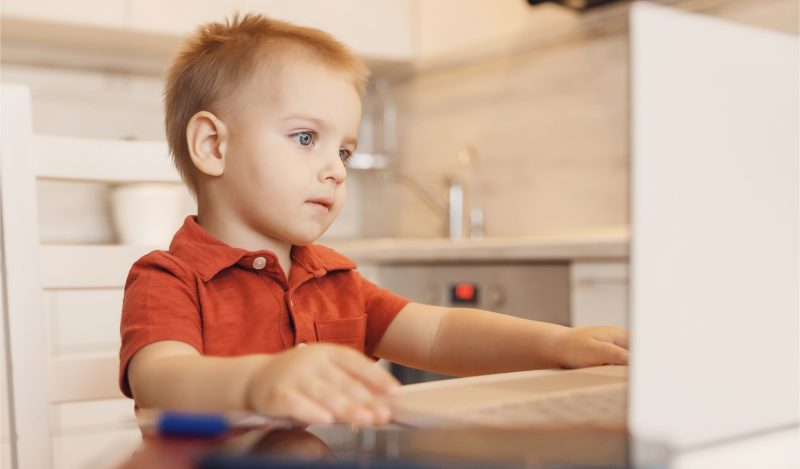Covid as an illness interests optometrists because we may deal not only with effects from the illness itself, but with the effects of lockdowns, interventions and consequent developmental interference. Interfering with development of visual abilities may loom at least as large as the disease in our professional eyes.
For the disease itself, early on in the pandemic, conjunctivitis (“pink eye”) was suggested as an early warning signal of Covid infection. As the pandemic continued, other complications were reported in case studies. Those complications were as serious and as varied as retina infections and eye muscle problems.
In contrast to those visible eye problems coincident with infection (or vaccination), developmental interference – and perhaps some parallel psychological problems – will take time to manifest. We wait; we wait to learn if, or to what depth we have injured our children.
Those disease case studies are helpful, but reflect just one case. We wanted to know what has actually been seen during this time “on the ground?”
To find out, we constructed research surveys that ask the question of optometrists across the globe, “What are you seeing?” Those surveys were done in June and October of 2021.
What optometrists world-wide are seeing
One survey investigated Covid as seen in private practices around the world (Hussey E, Schulman R. Surveying the scene: Results of the OEPF Online Covid-Related Conditions Survey. Optometry & Visual Performance 2022;1(Covid):55-8.) 1,557 optometrists from 18 countries responded to a brief survey about what Covid- and Covid vaccine-related eye problems they have seen.
Respondents were asked to respond for their practice patients, then secondarily for their personal experience with either sickness or vaccine.
We can very roughly divide the eye into the anterior segment (cornea and conjunctiva), posterior segment (retina and the vitreous gel body occupying the posterior 2/3 of the eye) and then the control mechanisms that may be expressed as eye movement, focusing and eye coordination problems. This group of 1,557 optometrists across the globe equally reported seeing Covid disease problems and vaccine problems.
These are numbers of doctors reporting seeing these conditions in their offices, not a count of individual cases seen by various doctors. When we changed the inquiry to a personal question of what had happened to the doctors themselves, of the group who either had the disease or were vaccinated (over 1,300 respondents), 72% reported symptoms. Of that 72% reporting symptoms, 40% put the blame on Covid and 25% put the blame on a vaccine.
If we coalesce all that into a statement of what optometrists in 18 countries have seen, both Covid and perhaps vaccines too have caused eye, vision, and eye-movement problems.
The development of nearsightedness in children
Rather than the disease of Covid, another worldwide survey looked at Covid lockdowns and remote learning on screens, asking whether optometrists are seeing increasing speed of the development of nearsightedness (myopia) in children (Hussey E, Vreven L, Pang Y, Taub MB. If a Tree Falls, Is It an Epidemic? Results of the OEPF Online COVID-and-Myopia Survey. Optometry & Visual Performance 2022;1(COVID):52-4).
The theory is that children spending hours looking at a screen instead of running around with their friends at school would put them at risk for increased myopia from the sustained focusing effort at near distance.
Responding to the survey were 1,246 largely private practice optometrists from 32 countries. Ninety-five percent of respondents in those 32 countries reported their countries subjecting that country’s children to online learning on two-dimensional screens. This was – is – a worldwide phenomenon.
Almost 60% of the respondents said myopia was increasing and increasing at a faster rate than prior to Covid lockdowns. Less than 30% think it’s the same as before Covid, While 85% of those who see a worsening epidemic of myopia put at least part of the blame on lockdowns.
Of course, maybe myopia isn’t a big worry to many, and not everyone who does online schooling will become (more) myopic.
My recent conversation with a student whose eyes hadn’t changed demonstrates conditions that may limit increases in myopia.
In looking at his chart prior to my exam, I thought this was a boy who I’d expect to go more nearsighted in this lockdown time. When he showed no changes, I had to ask a few questions to learn what I might be missing:
“Is your school in-person now?”
“Yeah. We’re going to school now.”
“Was your school online this past year?”
“Yes.”
“So, you did school online?”
“Well, I turned on the computer and signed in, then turned off my camera and went away to do something else.”
I think I understand. No nearsightedness, but also no learning. Obviously, this is a one-off case study and therefore should not be generalized to all school-aged children during this time. We hope.
School-aged children may well be at a higher risk for myopia, thanks to lockdowns. How about problems in younger kids? I’ve previously documented that having infants surrounded by masked people may interfere with the development of detecting faces and facial nuance, which includes emotion. If face detection development is, in fact, impaired, it may be irreparable. And, all of that is combined with distancing children from each other, reducing socialization.
If the ability to detect facial nuance, including emotion, suffers, what can we say about childhood relationships? Maybe we should add in what is not a one-off case report, but a suggested-and-celebrated school policy of kids forced to eat outside without speaking, 6 feet away from classmates and being instructed that the milk carton should be opened prior to removing the mask to absolutely limit unmasked time.
If instead of a research group centered at Duke, a lower-middle class parent, maybe in one of the shabbier houses on the block, in feeding her children lunch during non-summer months, forced them to sit outside in opposite corners of the yard, to eat in silence, to finish within 15 minutes, then to walk back inside again without speaking, the question would not be “if” but “when” to call Child Protective Services.
If we have inadvertently reduced the ability to read emotion in others as well as reducing socialization and social awards for human interaction, what have we built? Have we impaired sympathy? Why would you be sympathetic to a blank face? And what of empathy, that ability to understand on a personal level what someone else is going through? How can you empathize with something only recognized as eyes-nose-mouth rather than a human face that changes over time?
Summary
Covid infection is real and can affect eyes, vision and eye movement control, as well as the more widely discussed general effects. Although Covid-related eye problems are reported by optometrists broadly across the world, so are vaccine-related eye problems – and at over half the rate of disease-related problems. That, in itself, is interesting and reminds us of the ancient warning, first, do no harm.
The effects or potential effects on children of lockdown are more concerning.
Experts in vision think online schooling during lockdown may well be increasing the speed of myopic eye growth. A host of possible sequelae from excess myopia include things like increased risk of glaucoma, macular degeneration and retinal detachment.
Masking may be irreparably harming our children, impairing the ability to perceive emotions in the faces of others. Add to that impairing the ability to read the lips of others, both in developing speech and in providing backup to hearing speech. Those effects will take time to visibly manifest, as well as any potential psychological effects of distancing from others such as lack of empathy.
Quality of life is no longer a discussion in healthcare. People seem to be viewed as mere bags of virus just waiting to spew their contents on others. If that assessment is accurate, society will not recover. If the destruction of society is acceptable to some, it remains that dragging our children into this either with or without knowledge of risks is reprehensible. The travesty of choices made for our children during this pandemic may ultimately lead to tragedy for our future.
Join the conversation:

Published under a Creative Commons Attribution 4.0 International License
For reprints, please set the canonical link back to the original Brownstone Institute Article and Author.









